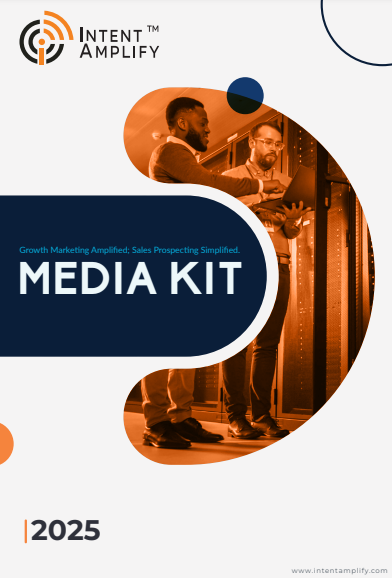
AI Personalization for ABM from Targeting to Pipeline Impact
- Last updated on: June 30, 2025
AI personalization in ABM is a 2025 game-changer, not a bonus. Account-based marketing (ABM) has always excelled in accuracy, but the demand for relevant, timely, and revenue-driving conversations is greater than ever. With email inboxes packed and buyer attention spans shorter, marketers can no longer waste time with wide nets. They need to talk directly to the buyer’s requirement, and that’s where AI-driven hyper-personalization fits in.
According to a 2024 Statista survey, 28% of B2B marketers are currently using AI for online personalization, and another 14% are in the pilot phase. In this article, the use of artificial intelligence in changing ABM from targeted to surgically exact is discussed, which unlocks deeper engagement and sales pipeline expansion.
The Evolution of Personalization in ABM
From Segmentation to One-to-One at Scale
Classic ABM relies on the idea of targeting a pre-known list of accounts with customized messaging. Even customized messages, though, tend to fail if they’re not pertinent to where the buyer stands in their path. AI brings the context. Through observation of behavior, technographics, intent signals, and firmographics, AI can dynamically build micro-segments and send messaging that is personal because it is.
Why Hyper-Personalization Matters More Now
Customers today demand the B2C experience in B2B. According to a 2024 Salesforce study, 73% of B2B buyers expect brands to know their individual needs and expectations. Generic nurture streams and static content hubs just won’t do anymore. AI closes that gap by delivering real-time, behavior-driven personalization at every touchpoint, email ads, website, and even SDR scripts.
How AI Enables Hyper‑Personalized ABM Campaigns
Predictive Analytics for Better Targeting
AI not only assists in segmentation but also in prediction. By inputting CRM data, third-party intent data, and behavior signals into machine learning algorithms, marketers can tell which accounts are most likely to convert before they even lift a hand. Predictive AI facilitates prioritization, enabling ABM teams to concentrate on high-intent accounts at the best possible time.
Dynamic Content Personalization at Scale
AI tools can be programmed to automatically create customized landing pages, email content, and ads based on account activity and firmographic information. Solutions such as PathFactory, Uberflip, and Demandbase AI engines are able to tailor the delivery of content in real time so that every stakeholder views the most appropriate message each time they interact. AI-powered personalization was shown in a McKinsey study to lower acquisition costs by as much as 50%, improve revenues by 15%, and drive ROI 30% higher.
Smart Orchestration Across Channels
AI makes sure orchestration is not only multichannel but also smartly sequenced. For instance, an AI engine can track how an account interacts with display ads and trigger personalized LinkedIn messages followed by a nurture email based on that behavior. This dynamic sequencing replaces static campaigns with adaptive campaigns that change as buyer signals shift. AI also synchronizes your outreach. Ditch the silos email, ads, chat, social, and website can all work together. ON24 data reveals AI-driven personalization almost doubles meeting conversion rates and increases content CTA engagement by 68%
Physical Benefits of AI Personalization for ABM
1. Higher Engagement Rates
A McKinsey report says that AI-personalized campaigns achieve 40% greater engagement as compared to static ABM campaigns. Personalized emails open 26% higher, and personalized web interactions yield 3x larger dwell times. These indicators produce more substantive top-funnel activity.
2. Shorter Sales Cycles
When messaging is at the proper time and resonates with buyer pain points, the qualification requirement becomes less demanding. AI enables SDRs and AEs to reduce unnecessary outreach and drive conversations more quickly by discussing known objections and priorities upfront.
3. Improved Pipeline Accuracy
AI doesn’t create a pipeline; it makes the pipeline more predictable. With AI, intent data and account-level scoring are provided to enable more accurate pipeline contribution forecasting. Real-time target adjustments minimize wasted spend and improve MQL to SQL conversion.
4. Enhanced ABM ROI
As per Demand Gen Report’s 2025 ABM Benchmark, 59% of AI-driven personalization-marketing marketers achieved ROI increases of 20% or higher in ABM campaigns. This is because AI reduces guesswork, enhances timing, and builds frictionless buyer experiences.
How Top Teams Are Implementing AI for Hyper-Personalized ABM
Building Unified Buyer Profiles Across Channels
Enterprise teams begin by pooling together CRM, behavioral, and third-party intent information to create comprehensive buyer profiles. AI facilitates the mapping of individual behaviors to account-level indicators, building a solid basis for segmentation and targeting.
Predictive Scoring and Dynamic Segmentation
AI solutions scan through previous interactions, firmographics, and technographics to determine predictive intent scores. Accounts are further segmented in real time according to their buying stage so that marketers can target efforts in places where they will make the most difference. Gartner and McKinsey studies have determined that organizations implementing AI-based predictive targeting see 50% increases in qualified leads and a 30% reduction in deal cycles.
Rather than using static messaging sequences, AI suggests the best messaging for each account and channels it through preferred media, email, web, paid media, or even chatbots, dynamically adjusting on response behavior.
Empowering Sales Teams With Real-Time Intelligence
Sales reps no longer get cold leads. AI supplies them with warm intelligence: who to contact, what to speak about, and when to call, grounded in real-time behavioral signals and journey milestones. This speeds conversion and enhances first-call success.
Continuous Optimization Based on Engagement Feedback
Post-engagement data is then utilized to further segment audiences and messaging. AI learns from each activity, clicks, response, demo booking, and optimizes campaigns accordingly for improved performance in the long run.
Getting Started with AI Personalization for ABM
Implement. Adopting AI personalization for ABM is not about incorporating another piece of tech into your stack. It’s about transformation, rethinking how your teams interact with buyers at scale. To impact in any meaningful way, businesses require a model that brings together strategy, accuracy, and incremental action. Here’s how to start effectively.
Start Small with Strategic Account Selection
One of the greatest errors B2B marketers commit is attempting to scale too quickly. Rather, begin by prioritizing a shortlist of high-value accounts that meet your revenue targets and possess enough buying signals or history. These accounts serve as the nucleus for your AI personalization pilot.
Use intent data, firmographic filters, and predictive scoring to segment and prioritize. Doing so limits your attention to the most probable accounts to convert and provides your AI systems with a tidy, controlled environment to learn and optimize.
Select One or Two High-Impact Channels
AI personalization has the strength to use throughout several touchpoints, but you can’t roll it out everywhere simultaneously. Start with one or two most important channels where you already possess some engagement traction.
These important channels include Email campaigns with AI-curated subject lines and body copy, Website experiences with behavior-based dynamic messaging, and paid advertising with AI-optimized adverts and bidding strategy. By reducing variables early, you can more effectively isolate what performs, grasp AI-driven performance gain, and gain internal confidence to scale.
Align Sales and Marketing on AI Insights
AI can bring goldmine insights from buying stage indicators to individualized speaking points, but only if they are used by the sales teams in actual conversations. Hence, cross-functional alignment becomes important. Provide AI-driven engagement scores and account heatmaps to SDRs and AEs; Create aligned playbooks integrating marketing automation with human follow-ups; And in the End, hold weekly debriefs to discuss AI discoveries and redefine outreach plans.
The aspiration is to make AI a shared intelligence engine for both teams, making each account touchpoint relevant, timely, and valuable.
Create Feedback Loops and Governance
Feedback is where AI excels. Without regular feedback loops, personalization models can get stale or broken. Construct a governance model to gather campaign performance, sales feedback, and model drift.
Utilize dashboards to monitor KPI such as MQL-to-SQL conversion rates, email engagement, and content pathing. Next, schedule frequent cadences for monitoring AI model performance and fine-tuning personalization logic. Lastly, engage sales in feedback sessions to validate qualitative data as the basis for future iterations.
This governance keeps your AI systems grounded against buyer behavior and internal performance metrics.
Test, Optimize, and Scale Intelligently
Once your initial campaigns show positive indicators, move into the optimization and scale phase. This involves running multivariate A/B tests using AI suggestions (e.g., message tone, CTA variants); Expanding personalization beyond core channels into events, chat, and social; and additionally, updating models regularly with new buyer signals, closed-loop feedback, and evolving personas.
Most effective B2B brands use AI as a dynamic learning tool rather than a static rules engine. Each test contributes to your knowledge of what resonates, and each campaign makes the personalization engine stronger.
Real Impact on Pipeline Output
AI-driven ABM isn’t hype—it delivers results:
- 40% greater engagement than non-AI campaigns
- 25% greater email open rates, and 10% greater CTRs, says Campaign Monitor seosandwitch.com
- 80% of targeted recommendations result in purchases, according to Epsilon seosandwitch.com
- 94% of Indian B2B marketers say they have seen enhanced ROI with AI, citing in particular improved segmentation, personalization, and prediction analytics
AI personalization for ABM is revolutionizing the manner in which marketers engage with prospects. Marrying data with creativity and intent with timing, AI fulfills what ABM has always promised: profound relevance at scale.
In the era of digital-first, experience-driven purchasing, B2B brands that use AI-fueled hyper-personalization aren’t only playing catch-up; they’re leading the way. Activate AI-fueled ABM campaigns that convert? Reach out to the professionals at Intent Amplify today.
FAQs:
1. What is AI personalization in ABM?
AI personalization in ABM is the application of artificial intelligence to personalize content, outreach, and engagement tactics for every target account through real-time data, behavior, and intent.
2. How does AI personalize ABM campaigns?
AI is employed for large dataset analysis to forecast buyer intent, segmenting the audience, creating dynamic content, channel orchestration automation, and real-time optimization of campaigns.
3. What are the advantages of AI personalization in B2B marketing?
Key advantages are enhanced engagement rates, reduced sales cycles, enhanced pipeline forecasting, increased campaign ROI, and more targeted customer experiences.
4. How do small marketing teams deploy AI with ABM?
Begin with scalable tools such as HubSpot or Drift that have native AI capabilities. Prioritize key accounts and use personalization on a single or two channels first, before scaling.
5. Which sectors get the most advantage from AI-based ABM?
Industries with long and complicated sales cycles, such as SaaS, FinTech, Cybersecurity, and IT Infrastructure, are best served because they have a requirement for high-quality engagement and customization.



